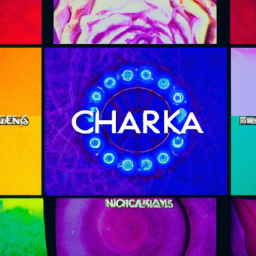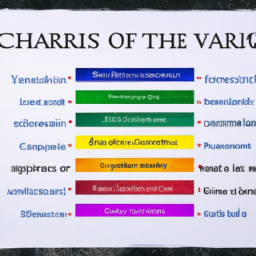Chakras, the energy centers of the body, have been recognized by ancient cultures and healing practices for centuries. These seven chakras are believed to be aligned along the spine, starting from the base and ending at the crown of the head. Each chakra is associated with specific physical, mental, and emotional aspects of our being. It is believed that the flow of energy through these chakras is vital to our overall well-being and can impact our physical, mental, and emotional health.
The word “chakra” comes from the Sanskrit language and translates to “wheel” or “disk”. This is a fitting name, as it is believed that these energy centers spin like wheels, regulating the flow of energy throughout the body. Each chakra is also associated with a specific color and frequency, which correlates to its unique characteristics and functions.
The Seven Chakras and Their Frequencies
There are seven main chakras in the body, each with its own frequency and corresponding color. These frequencies are believed to vibrate at different speeds, ranging from low to high. When all the chakras are in balance and properly aligned, the body functions at its optimal level. Let’s take a closer look at each chakra and its associated frequency.
1. Root Chakra (Muladhara)
The root chakra is located at the base of the spine and is associated with the color red. Its frequency is the lowest of all the chakras, vibrating at a rate of around 396 Hz. This chakra is connected to our basic survival needs, as well as our sense of security, stability, and grounding.
2. Sacral Chakra (Svadhisthana)
The sacral chakra is located in the lower abdomen, just below the navel, and is associated with the color orange. Its frequency is slightly higher than the root chakra, vibrating at around 417 Hz. This chakra is connected to our emotions, creativity, and sexuality.
3. Solar Plexus Chakra (Manipura)
The solar plexus chakra is located above the navel and is associated with the color yellow. Its frequency is even higher than the sacral chakra, vibrating at around 528 Hz. This chakra is connected to our personal power, self-esteem, and confidence. It is also responsible for our digestion and metabolism.
4. Heart Chakra (Anahata)
The heart chakra is located in the center of the chest and is associated with the color green. Its frequency is around 639 Hz. This chakra is connected to our ability to love and feel compassion, as well as our relationships with others.
5. Throat Chakra (Vishuddha)
The throat chakra is located at the base of the throat and is associated with the color blue. Its frequency is slightly higher than the heart chakra, vibrating at around 741 Hz. This chakra is connected to communication, self-expression, and speaking our truth.
6. Third Eye Chakra (Ajna)
The third eye chakra is located between the eyebrows and is associated with the color indigo. Its frequency is even higher than the throat chakra, vibrating at around 852 Hz. This chakra is connected to our intuition, imagination, and perception.
7. Crown Chakra (Sahasrara)
The crown chakra is located at the top of the head and is associated with the color purple or white. Its frequency is the highest of all the chakras, vibrating at around 963 Hz. This chakra is connected to our spirituality, consciousness, and connection to the divine.
How Chakra Frequencies Affect Us
When our chakras are out of balance or blocked, the corresponding frequency may become imbalanced, causing physical, mental, and emotional issues. For example, if our root chakra is blocked, we may experience feelings of insecurity, fear, or lack of stability. Likewise, if our throat chakra is imbalanced, we may struggle to communicate effectively or speak our truth.
By understanding the frequencies of each chakra and their impact on our overall well-being, we can utilize various practices such as meditation, yoga, and sound healing to balance and align our chakras. For instance, certain mantras or chants can produce specific frequencies that can help to restore balance to a particular chakra.
Final Thoughts
Our chakras and their frequencies are integral to our overall physical, mental, and emotional health. By understanding the characteristics and functions of each chakra and the corresponding frequency, we can work towards balancing and aligning these energy centers to achieve optimal health and well-being.
It is important to note that chakra frequencies may vary for different individuals and can also change over time depending on our thoughts, emotions, and experiences. Therefore, it is essential to continually check for imbalances and make necessary adjustments to maintain a healthy flow of energy throughout our chakras.





Fascinating post – I’d love to learn more about the frequencies of individual Chakras!
Great answer! It’s wonderful to see that chakras can bring balance to our lives when their frequencies are properly aligned!